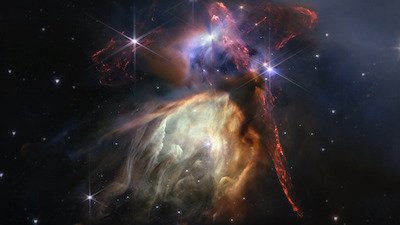Galaxy Aglow With New Stars
Are the stars of NGC 253 bursting in space?
News Source
- ScienceDaily: “A Galaxy Blooming With New Stars”
The Silver Dollar Galaxy in the constellation Sculptor provided a very photogenic target for testing the European Space Agency’s VLT Survey Telescope (VST). VST is the largest telescope in the world to rely on visible light for its observations. The detailed images of bright blue clumps in the spiral galaxy are purportedly “stellar nurseries where hot young stars have just ignited.”
NGC 253 was discovered in 1783 by William Herschel’s sister, Caroline. Because it is so bright, its beauty is accessible to anyone with binoculars. But crisp details require the VST’s imaging systems. Many astronomers consider NGC 253 to be a “starburst” galaxy exhibiting “widespread active star formation.” VST data will be combined with infrared images to learn more about “the younger generations of stars in NGC 253.”
Astronomers are not actually seeingstar formation happening
Clearly, VST can see NGC 253 more clearly than ever before. But can VST actually see star formation? Many astronomers refer to star formation as if they are actually seeing it happen, but they are not. What they are seeing is regions, commonly spiral galaxies—such as NGC 253—with lots of blue stars.
Blue stars are the hottest stars and burn their fuel very rapidly. The maximum age for each color star can be estimated, and only red dwarf stars actually have enough fuel to have been burning since the time of the supposed big bang. Both creationist and evolutionary astronomers agree a blue star could not last more than a few million years. Since the latter claim the universe is 13.7 billion years old, they must assume stars have been forming and burning out since it began. They believe stars are still forming today and blue stars are those most recently formed.
Since astronomers with a biblical worldview starting with Genesis believe the universe is only about 6,000 years old, blue stars’ “persistence” is easily explained. God formed them on the fourth day of Creation week as His eyewitness account in Genesis 1:16 says. They’ve only been burning for 6,000 years and so have plenty of fuel remaining.
Could stars still be forming? After all, we see supernovae occur in space, so why not star formation too? Although the Bible does not say God is not making more stars, it does say He finished the work of Creation on the sixth day. Genesis 2:1 says, “Thus the heavens and the earth, and all the host of them, were finished.” When a star goes supernova, an existing star explodes. But formation of stars postulated by “long-age” astronomers seems contrary to the laws of physics, given the conditions that exist in space.
Secular astronomers claim a star is formed when a nebula of swirling gas condenses until dense enough to possess enough gravity to prevent re-expansion. However, gases tend to expand, not contract. Secondly, if a swirling mass of gas contracted, it would spin faster in order to conserve angular momentum, and that increased angular velocity would oppose continued contraction. Finally, such collapse of a nebula would greatly magnify its magnetic field, again opposing the shrinkage required to form a star.
The Bible does not tell us any “mechanism” by which God made the stars. By the power of His word He created them during the same week in which He created the entire universe including the laws of physics. Uniformitarian thinking assumes things have always happened the same way and continue to do so today, and—in the case of star formation—that requires extremely unlikely conditions. Biblical thinking does not violate the laws of physics because the formation of stars is understood to have occurred when those laws were also being created.
The VST is a marvelous instrument, but it cannot show stars actually forming. Many astronomers think VST is taking snapshots of stars in various stages of formation, but only their imagination can connect the dots to create stellar nurseries. So-called “starburst” galaxies like NGC 253 where lots of blue stars blaze brightly are actually evidence for the young universe created by the God of the Bible. “The heavens declare the glory of God; And the firmament shows His handiwork (Psalm 19:1).
Further Reading
- The Stars of Heaven Confirm Biblical Creation
- Blue Stars
- The Bible and Modern Astronomy, Part 1
- Stellar Evolution, Distant Starlight and Biblical Authority
- Star Formation - can it happen?
- Beyond Distant Starlight: Next Steps For Creationist Cosmology
For More Information: Get Answers
Remember, if you see a news story that might merit some attention, let us know about it! (Note: if the story originates from the Associated Press, FOX News, MSNBC, the New York Times, or another major national media outlet, we will most likely have already heard about it.) And thanks to all of our readers who have submitted great news tips to us. If you didn’t catch all the latest News to Know, why not take a look to see what you’ve missed?
(Please note that links will take you directly to the source. Answers in Genesis is not responsible for content on the websites to which we refer. For more information, please see our Privacy Policy.)
Recommended Resources

Answers in Genesis is an apologetics ministry, dedicated to helping Christians defend their faith and proclaim the good news of Jesus Christ.
- Customer Service 800.778.3390
- Available Monday–Friday | 9 AM–5 PM ET
- © 2025 Answers in Genesis






